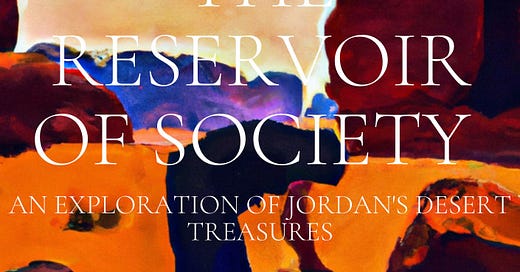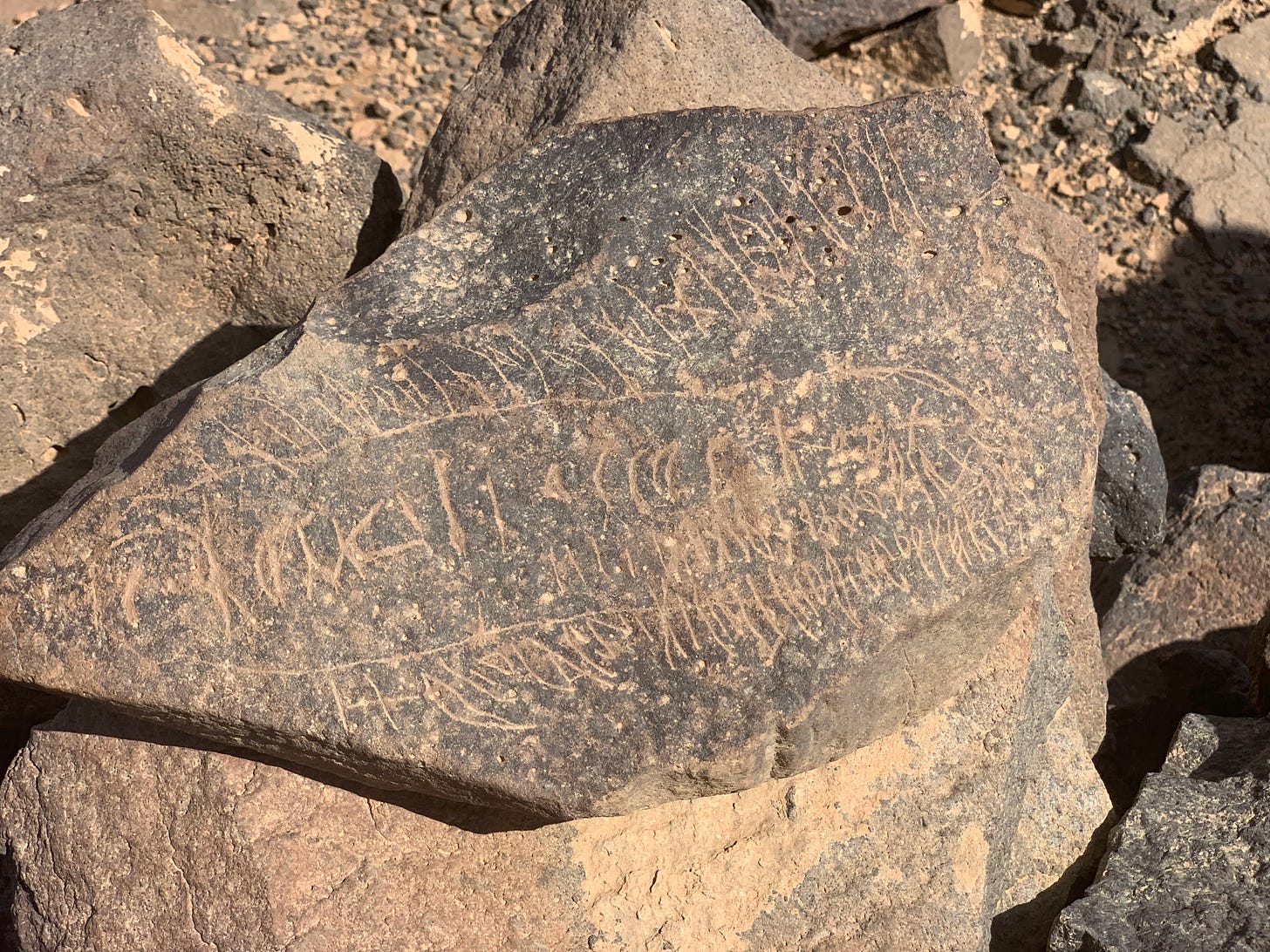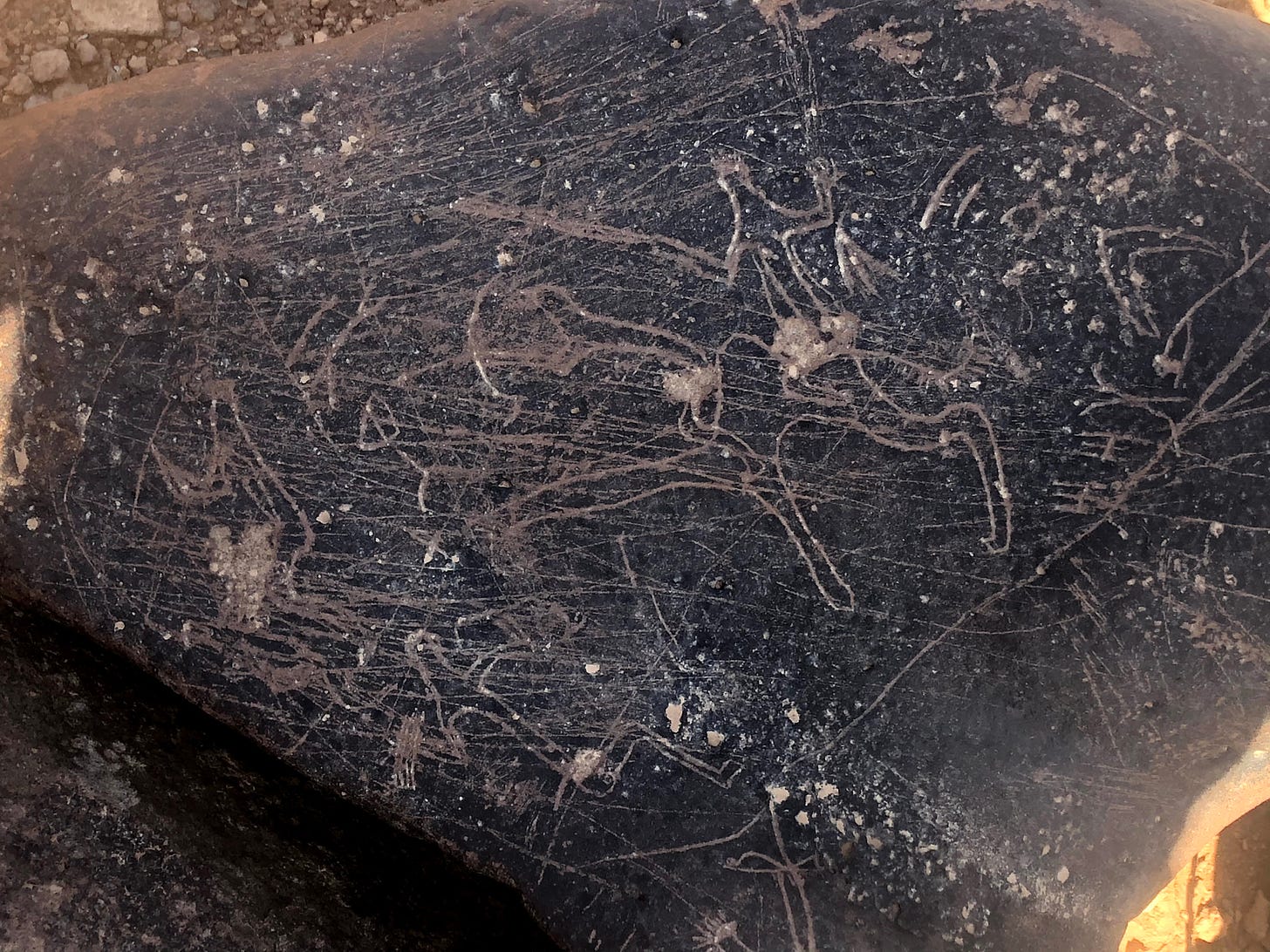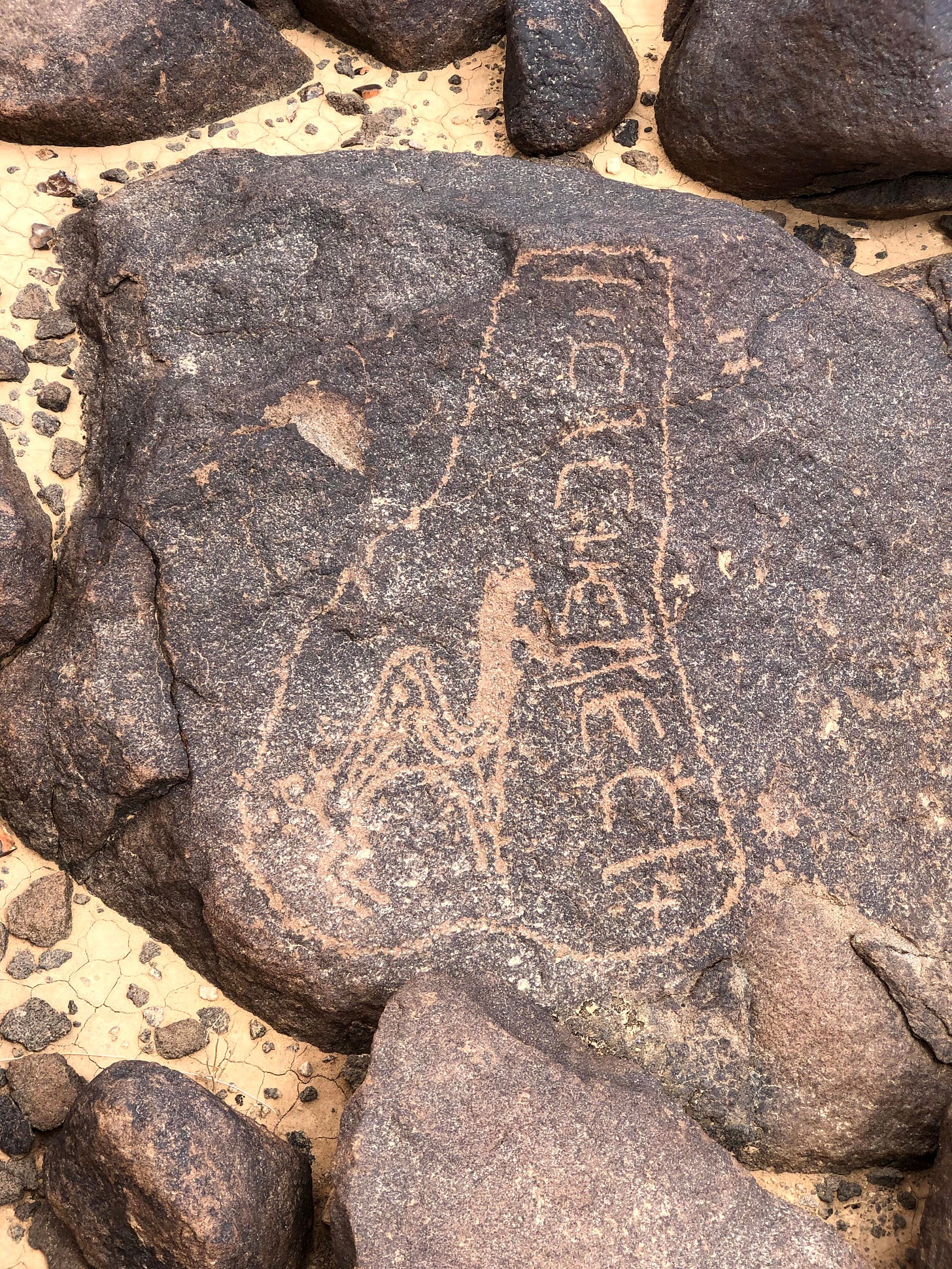Carving A Place in History (Paper 11)
The Jordanian desert has long been a treasure trove of archaeological discoveries, offering glimpses into the lives and cultures of ancient civilizations. One of the most enigmatic and historically significant findings in the region is the Safaitic inscriptions. These ancient texts, carved into rocks, have shed light on the lives of nomadic tribes and their connection to the Middle East's broader archaeological landscape.
Discovery of Safaitic Inscriptions
The Safaitic inscriptions were first discovered in the early 20th century when a British pilot, Lieutenant Percy Cox, stumbled upon them while flying over the black basalt desert of Jordan, which stretches from southern Syria to northern Saudi Arabia. The inscriptions, which would later be named Safaitic after the region of Safawi in Jordan, caught the attention of archaeologists and historians worldwide.
Over the following decades, researchers uncovered thousands of Safaitic inscriptions, revealing the language, culture, and history of the ancient nomadic tribes that inhabited the region. These inscriptions are dated from the 1st millennium BCE to the 4th century CE.
Safaitic Language and Culture
The Safaitic inscriptions are written in an Old North Arabian script, which was once spoken by the nomadic tribes of the ancient Arabian Peninsula. The language is related to other ancient scripts found in the Middle East, such as Thamudic, Dadanitic, and Hismaic. The texts are predominantly short phrases and isolated words, which were carved by individuals to communicate information, beliefs, and experiences.
The inscriptions reveal the life and culture of the ancient nomads, including their religious practices, social structure, and economy. They also offer a fascinating insight into their everyday concerns, such as grazing their animals, finding water, and seeking protection from the harsh desert conditions. Many inscriptions also feature drawings of animals and people, providing an artistic window into the minds of these ancient tribes.
Importance to the Middle East's Broader Archaeological Landscape
The discovery of the Safaitic inscriptions has had a significant impact on the understanding of the Middle East's archaeological landscape. They provide evidence of the linguistic and cultural diversity that existed in the region.
Safaitic inscriptions have been invaluable in reconstructing the ancient North Arabian languages and their relationship to other Semitic languages. The texts have also shed light on the development of the Arabic script, which evolved from the ancient North Arabian scripts, such as Safaitic. This connection highlights the continuity of language and culture in the Arabian Peninsula across millennia.
The Safaitic inscriptions also hold great importance in understanding the broader context of ancient Arabian rock art, which is a testament to the creativity and expression of these ancient nomads. This art form serves as a crucial cultural link between the civilizations of the ancient Middle East and the modern Arab world.
The discovery and study of the Safaitic inscriptions in the Jordanian desert have made significant contributions to the understanding of the Middle East's ancient history and cultural landscape. These enigmatic texts offer a unique window into the lives, beliefs, and culture of ancient nomadic tribes, providing invaluable information about their language, religion, and economy. The Safaitic inscriptions not only underscore the archaeological significance of the Middle East but also serve as a reminder of the region's diverse and interconnected history, which is still being unearthed and explored to this day.











